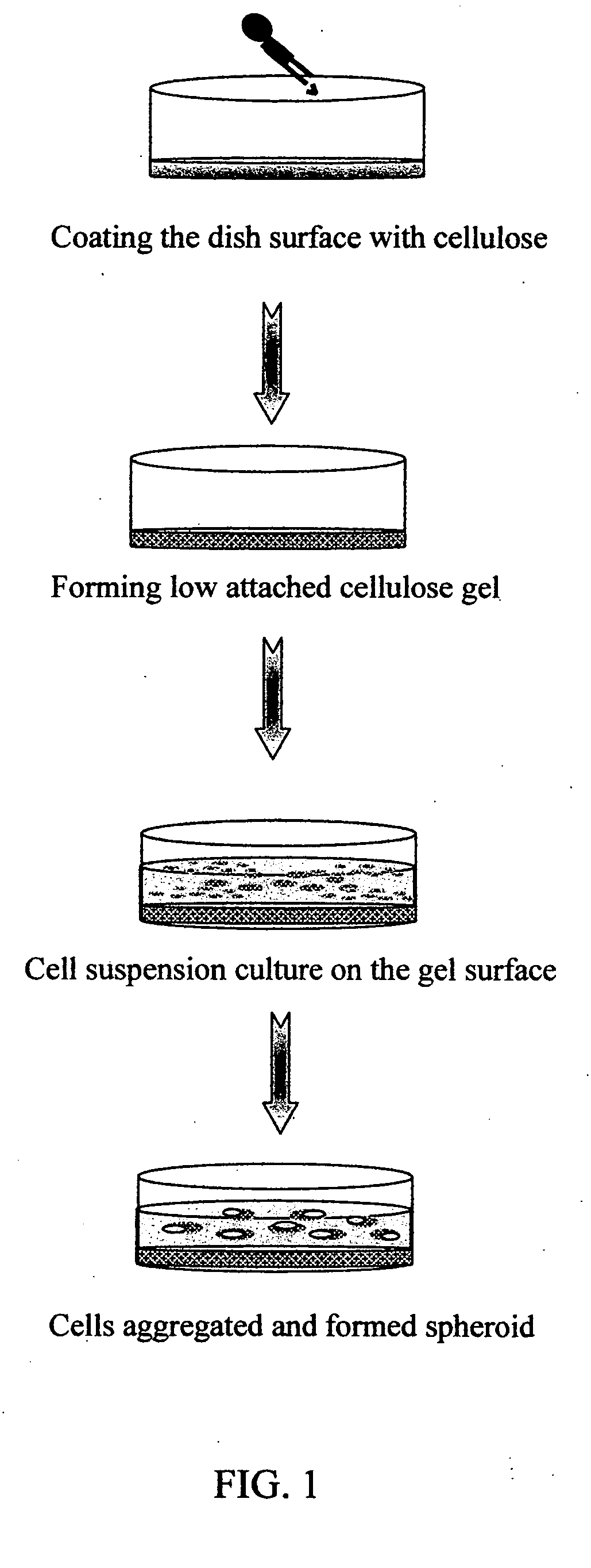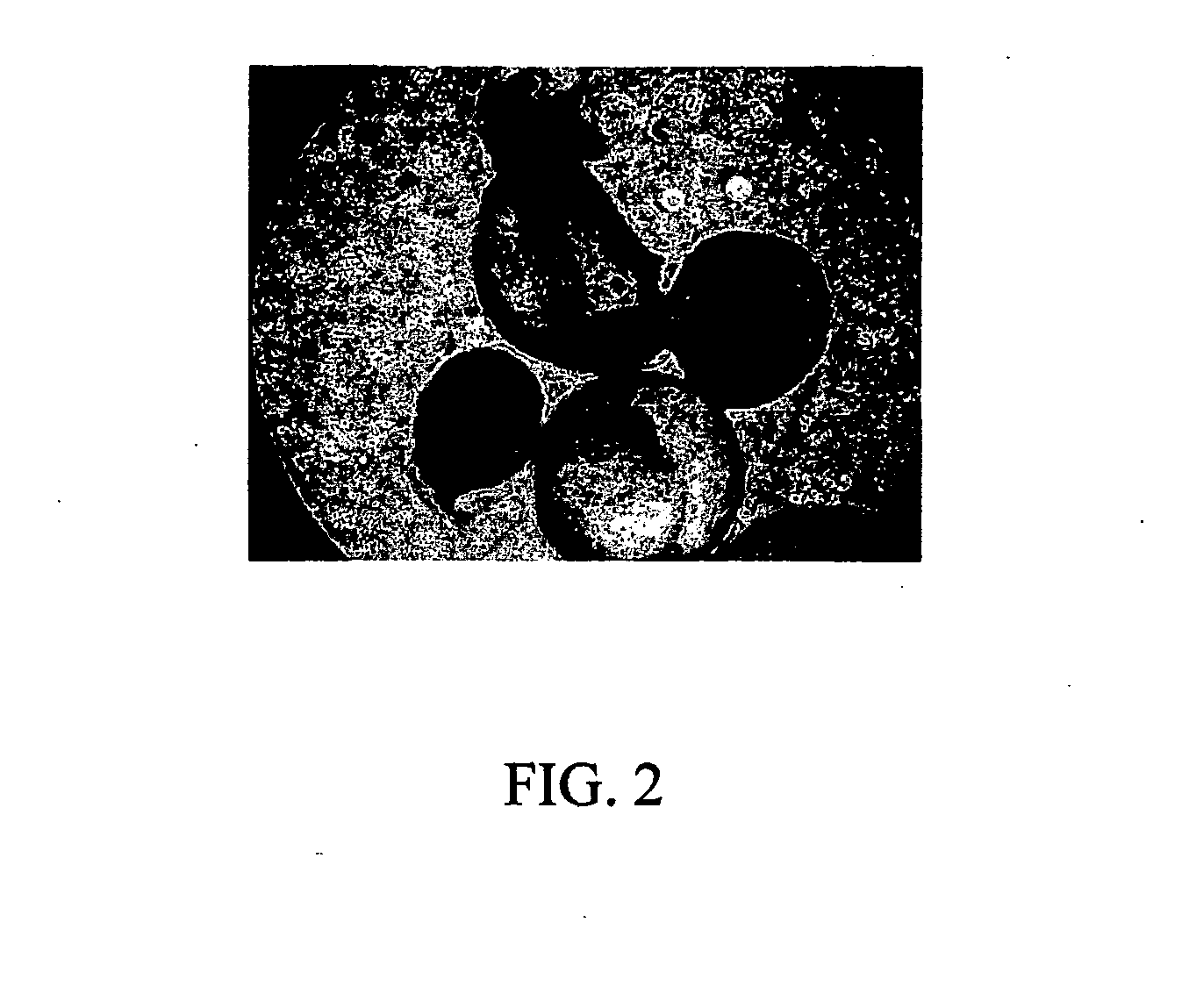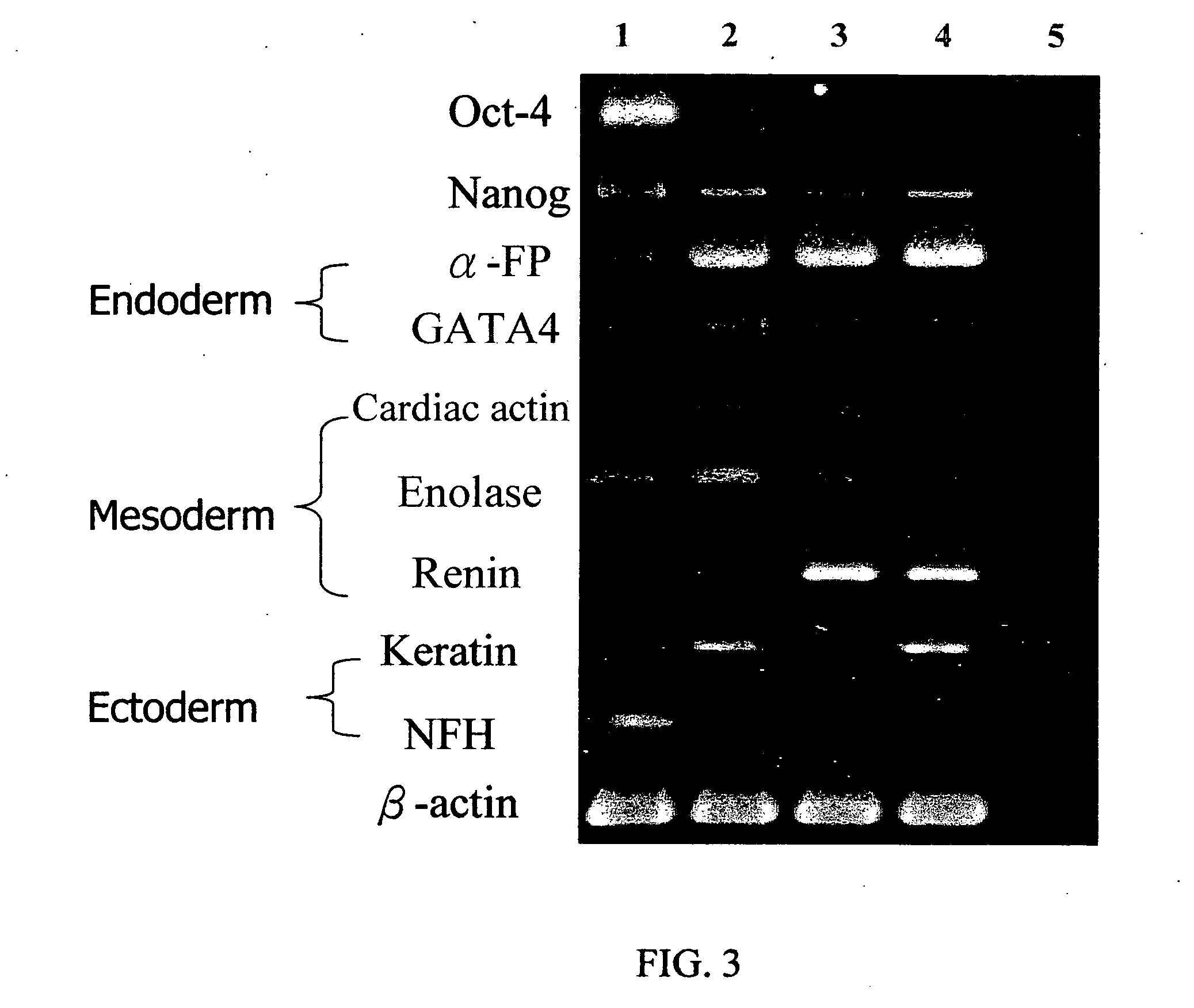Method of forming multicellular spheroids from the cultured cells
- Summary
- Abstract
- Description
- Claims
- Application Information
AI Technical Summary
Benefits of technology
Problems solved by technology
Method used
Image
Examples
example 1
Formation and Phenotypic Characterization of Embryoid bodies (EBs) of HES cells
1.1 Culturing of HES Cells
[0052] 1.1.1 Preparation of Conditioned Medium
[0053] Conditioned medium for maintaining the culture of HES cell was prepared according to the following procedure. Briefly, primary mouse embryonic fibroblasts (PMEF) were plated in Dulbecco's Modified Eagle Medium (DMEM, obtained from Gibco Invitrogene) supplemented with 10% fetal bovine serum (FBS). Cell cultures were maintained at 37° C. and 5% CO2 and in a water-saturated atmosphere until they reached confluence, then 10 μg / ml mitomycin C was added to inactivate the fibroblasts. The inactivated fibroblasts were then re-grown in DMEM medium supplemented with 20% FBS, 1 mM β-mercaptoethanl (obtained from Gibco Invitrogene), 1% non-essential amino acids (obtained from Gibco Invitrogene), 1% glutamine (obtained from Gibco Invitrogene), and 1% insulin- transferrin-selenium G supplement (ITS G supplement, obtained from Gibco Invit...
example 2
Formation of Hepatic Spheroids
[0072] Human hepatoma cell line, i.e., C3A cells, were plated in DMEM medium supplemented with 10% FBS. Cells were maintained at 37° C. and 5% CO2 and in a water-saturated atmosphere until they reached 90% confluence, then the cells were trypsinized, counted and re-plated onto the cell culture dishs, conventional low attachment Petri dishes (Falcon) or the MC-gel coated culture dishes of Example 1.2.2. FIG. 6A illustrated the morphology of C3A cells attached culture on cell culture dish, FIG. 6B illustrated the partial formation of spheroids for cells maintained in a low attachment Petri dishes for 4 days, most cells showed attached growth on the photograph. In stark contrast, most of the cells maintained in the MC-gel coated culture dish of this invention for 4 days formed spheroids (FIG. 6C), and their expression of hepatic-specific genes such as α-FP, albumin, G6P and CYP 3A4 were illustrated in FIG. 7. (Lane 2)
[0073] Hepatic Enzyme Activity Measur...
PUM
 Login to View More
Login to View More Abstract
Description
Claims
Application Information
 Login to View More
Login to View More - R&D
- Intellectual Property
- Life Sciences
- Materials
- Tech Scout
- Unparalleled Data Quality
- Higher Quality Content
- 60% Fewer Hallucinations
Browse by: Latest US Patents, China's latest patents, Technical Efficacy Thesaurus, Application Domain, Technology Topic, Popular Technical Reports.
© 2025 PatSnap. All rights reserved.Legal|Privacy policy|Modern Slavery Act Transparency Statement|Sitemap|About US| Contact US: help@patsnap.com



